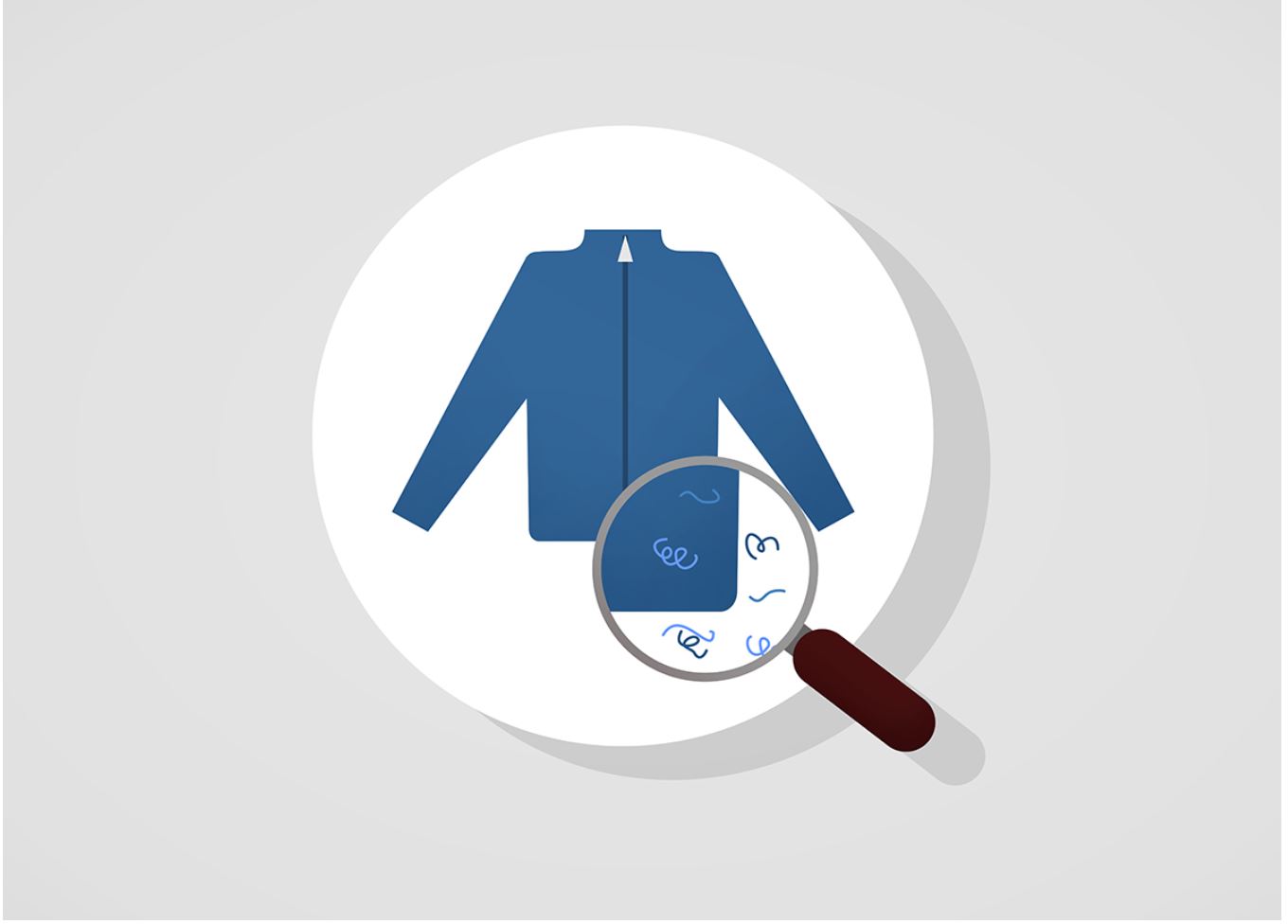This article was previously published on March 13, 2017.

Navigating the path to an environmentally-friendly wardrobe sure isn’t easy. There are so many aspects to consider, such as country of origin, fabric of choice, ability to biodegrade, and welfare standards of workers–among many other factors. It can feel overwhelming. But one thing is absolutely certain: synthetic fibers are having deadly consequences on our oceans. Today I’m discussing why we must start wearing natural fibers and steer clear of synthetic ones in the name of ethical fashion.
What do polyester, acrylic, and nylon all have in common? They’re all man-made fibers derived from petrochemicals. They are durable and can hold pigment better than their natural counterparts and that’s an obvious selling point. However, polyester manufacturing has been shown to be harmful to the environment. And more than that, beneath that shiny exterior is a microscopic problem. A microscopic problem causing massive consequences. I’m referring to microplastics of course.

As a collective, we’re very aware of the giant pieces of trash clearly visible to the naked eye. They’re what wash up on our beaches and litter our parks. But what about the weathered or degraded plastics only visible through a microscope? These are bioaccumulating in our oceanic food chains and causing pollution to occur at an unprecedented rate. Unfortunately, many of our clothes are to blame.
One laundry cycle containing synthetic fibers such as acrylic can release around 700,000 microscopic plastic fibers. These pieces are so small that they pass right through wastewater treatment barriers and end up in the open ocean.
Brands such as Patagonia incorporate recycled plastic into their outdoor gear and often market these items as more environmentally friendly. The recycling part is technically good–transforming many unwanted plastic bottles into wearable garments is certainly better than letting those plastics end up in a landfill. However, as those garments pass through the washing machines of the consumers, they shed microplastics with each cycle. This causes a steady stream of pollution that undoes the steps towards more ethical practices in the first place.
So what’s the big deal exactly? The problem is that microplastics are being ingested by marine organisms. Findings show that these organisms are changing their behavior as a consequence. Most commonly, plastic is ingested, the animals think they’re full, so don’t pursue prey, don’t feed, and ultimately starve to death with full stomachs. This has been seen in crabs and pike fish, among others. If populations aren’t making it to reproductive age, they aren’t mating, aren’t producing offspring, and ultimately are decreasing in numbers.

So where do we go from here?
There are two preventative measures that I forsee being developed as awareness increases regarding microplastics as a by-product of machine washing. The first is fine mesh bags that can house the garment(s) during washing to prevent any fibers escaping into the wastewater. Check out this amazing Kickstarter for exactly that. This bag is a genius accessory that brands wanting to use recycled plastics in their garments should be including with each purchase. Hopefully, this is something we’ll see in the not-too-distant future. The second is a filter built into washing machines themselves that can catch plastics from each cycle.

If you’re wanting to know how you can be a responsible consumer and minimize your microplastic waste, there are two things to consider.
- If you already own synthetic garments, there’s no point in getting rid of them. If you’re not the one washing them, someone else will be instead if they buy the piece from whatever thrift store you’ve donated it to. What you can do is look for ways to decrease the frequency of washing and hand wash where possible. We agitate fabrics less when we hand wash, and so this is likely to release fewer fibers as a result.
- For any new purchases, I highly encourage you to research products made from natural fibers that ultimately will biodegrade. That way, even though some small particles will still be shed during washing, these will not cause the same detrimental effects to our marine ecosystems. In my experience, synthetic fibers usually come into play when purchasing activewear such as running or yoga gear, or hardy garments for outdoor pursuits. Next time a purchase is required, consider cotton, bamboo, or tencel. The latter is a high-performance fiber made of wood pulp. All of these are breathable, sustainable if purchased from ethical brands, and genuinely feel better against the skin than artificial alternatives.
We’ve got a long way to go when it comes to ethical fashion, but if you take only one thing away from this, it’s to consider the life cycle of the clothing you purchase. If you want somewhere to start, I highly recommend this awesome Eco & Ethical Shopping Guide that provides options from around the world to suit every reader.
What are your favorite natural fibers and ethical brands?
Also by Kat: Cotton: The Hard Truth about this Soft Fabric
Is Sand Mining the Next Blood Diamond? What You Should Know
Related: What You Can Do Now to Fight Climate Change In Your City
Get more like this—Subscribe to our daily inspirational newsletter for exclusive content!
__
Photo: Unsplash, NOAA, Unsplash and Guppy Friend




